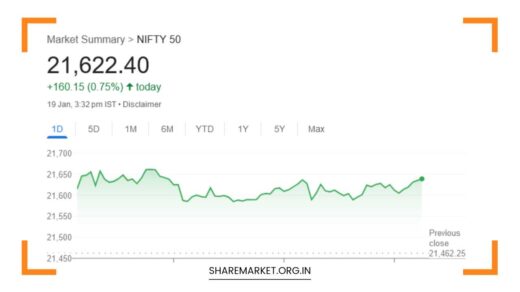Sensex Down 14 Points, Nifty at 25,940; Tomorrow Nifty Prediction

Tomorrow Nifty Prediction
Market Update: Flat Close and Anticipated Movements for September 25
On September 24, Indian equity indices concluded the trading day on a flat note amidst notable volatility. The Nifty index managed to cross the psychological barrier of 26,000 for the first time, reflecting a momentary bullish sentiment.
However, it closed at 25,940.40, representing a marginal increase of just 1.40 points or 0.01%. The Sensex, in contrast, saw a slight decline, falling by 14.57 points or 0.02%, to settle at 84,914.04.
This performance illustrates a market grappling with mixed signals, as traders evaluate various factors influencing stock prices, including macroeconomic indicators, sector-specific movements, and geopolitical developments.
Trading Dynamics
Throughout the trading session, market breadth indicated cautious sentiment. A total of 1,871 stocks advanced, while 1,946 stocks declined, with 84 remaining unchanged.
The day’s biggest gainers in the Nifty included Tata Steel, Hindalco Industries, Power Grid Corporation, Tech Mahindra, and Adani Enterprises, showcasing strength in the metal and power sectors.
On the flip side, the biggest laggards included SBI Life Insurance, Hindustan Unilever Limited (HUL), Grasim Industries, UltraTech Cement, and Shriram Finance, pointing to sector-specific challenges that may be affecting investor sentiment.
Sector Performance Analysis
The performance across sectoral indices revealed a mixed landscape. The metal index experienced a robust increase of 3%, reflecting rising commodity prices and strong demand dynamics.
The oil and gas sector also saw a modest gain of 0.6%, underpinned by fluctuating global crude oil prices.
The power index rose by 1.4%, driven by positive sentiment towards infrastructure development and renewable energy investments.
However, other sectors like PSU banks, FMCG, and telecom faced declines ranging from 0.5% to 1%. This divergence in sector performance underscores the need for investors to remain selective, focusing on industries with strong fundamentals and growth prospects.
The BSE midcap and smallcap indices closed flat, indicating a cautious approach from investors in these segments. This could reflect uncertainty regarding the broader economic environment and corporate earnings outlook.
Market Sentiment and Technical Insights
Aditya Gaggar, director at Progressive Shares, remarked that the trading day showcased both bullish and bearish activity.
After a slow start, the Nifty index gained momentum, supported by IT stocks that temporarily helped it breach the 26,000 mark.
However, as trading progressed, the index lost most of its gains, signaling indecision among traders and investors.
A spinning top candlestick pattern formed at these elevated levels, suggesting a lack of conviction in either direction. Technical analysts view this as a signal that traders are weighing their options carefully.
For the Nifty to sustain upward momentum, a decisive move above 26,000 is crucial; analysts believe this could lead to an advance toward 26,100.
Conversely, strong support is identified in the 25,800 to 25,850 range, which could act as a buffer against further declines.
Rupak Dey of LKP Securities pointed out that after three days of consecutive gains, the Nifty’s performance in a limited range indicates a market searching for direction.
Despite the recent gains, the short-term sentiment remains positive, with the Nifty maintaining its position above the 21-day Exponential Moving Average (EMA) and showing a bullish crossover in the daily Relative Strength Index (RSI). These indicators suggest that, while cautious, there remains a foundation for potential upward movement.
Geopolitical Factors and Global Economic Indicators
VK Vijayakumar of Geojit Financial Services raised concerns about rising geopolitical tensions in the Middle East, particularly following Israeli military actions in Lebanon.
These developments have led to increased oil prices, which can have a cascading effect on inflation and consumer spending. Additionally, both gold and the volatility index have seen upward trends, indicating investor anxiety.
Despite these geopolitical challenges, Vijayakumar maintains that the overall market sentiment remains bullish. Investors are often resilient, and markets can remain strong in the face of external pressures if domestic fundamentals remain robust.
Future Outlook and Earnings Expectations
Aishwarya Dadhich, founder and CIO of Fident Asset Management, shared insights regarding future market movements.
He noted that if Foreign Institutional Investors (FIIs) continue to buy into the Indian market, it could pave the way for significant gains as Diwali approaches. Historically, this festive season has been a period of positive market performance, driven by heightened consumer spending and economic activity.
However, Dadhich cautioned that expectations for the IT sector’s performance in the second quarter are muted. He highlighted that major players like Infosys and TCS are anticipated to grow at rates between 1.5% and 2.5%, a stark contrast to the usual growth of 5% to 6% during this period.
The subdued outlook for IT stocks may weigh on market sentiment, particularly given the sector’s significant weight in the Nifty index.
Market Focus Ahead
As we look ahead to September 25, Prashant Tapase of Mehta Equities emphasized that the market’s attention will likely shift towards the upcoming US PCE inflation data, scheduled for release on Friday.
This data will be crucial in shaping market expectations regarding interest rates and economic growth.
While the Nifty is expected to trade within a range of 25,000 to 26,500 in the coming days, the 26,500 level has now emerged as a significant resistance point.
Traders should remain vigilant for potential breakouts or breakdowns, as these levels can dictate short-term trading strategies.
In conclusion, the Indian equity market faces a complex interplay of domestic and global factors as it navigates through uncertain waters.
Investors should remain focused on key economic indicators, sectoral trends, and geopolitical developments, all of which will influence the market’s trajectory in the near term.
As always, prudent investment strategies and careful analysis will be essential for navigating this dynamic environment.

















